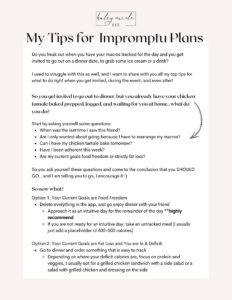What is macro tracking? I am sure you have heard about this term but there are so many things to learn, right? Don’t worry, this blog has it all, from what it is, how to set your macro numbers, and even where to find the best macro friendly recipes.
So, let’s begin with what are macros?
Macronutrients are a part of your daily life, whether you know it or not. You need them to survive, and consuming them supplies you with your daily energy, also known as calories. The three macronutrients are carbohydrates, fats, and protein.
To break it down even further let’s talk about each macro.
Carbohydrates are mainly sugars and starches, some examples are; bread, oatmeal, rice cakes, pasta, fruit, vegetables, jellies, jams, hard candies, and pretzels.
Fats are mainly fats and lipids also known as triglycerides, some examples are, olive oil, avocados, coconut oil, nut butter, nuts, and seeds.
Protein helps build and repair body tissues, some examples are yogurt, cottage cheese, chicken, beef, eggs, fish, and protein powders.
Now that we know what macros are, would you agree that you consume these every day and need them to survive?
Ok, cool, so what does it mean to track them?
If macros are carbs, fats, and protein, and they make up the foods that we eat, then they also make up the calories that we eat right?
Carbohydrates are 4 calories per gram.
Fats are 9 calories per gram.
Protein is 4 calories per gram.
So in order to get your total calories for food, you can do this math equation;
Protein grams*4 + Carb grams*4 + Fat grams*9 = total calories

Where do you track your macros?
It is very possible to do this the old-school way and use a spreadsheet, but there are many apps out there that allow you to track your macros quite easily.
What is the best macro tracking app?
There are various apps, and it is subjective to say which one is the ‘best’ because everyone has different opinions. I always use My Fitness Pal because I started with that app and it is what I am used to. A lot of my clients also like;
- LoseIt
- My Macros+
- Carb Counter
How do I figure out my macros?
It can be quite complicated, there are calculators out there that can help with this, but if you try multiple calculators you may realize that you get different numbers with each. Using a calculator will provide you will a good baseline, but it is important to know how many calories you are currently consuming, what your dieting history is like, and to be truthful when it comes to daily activity. That is why I recommend 1:1 coaching or my custom macro assessments.
How do I set my macros for fat loss?
To set your macros for fat loss it is best if you know what calories/macros you maintain your weight at. If you have no idea where you maintain your weight it is going to be more difficult to figure out where you will lose weight, but it is possible. If you know your maintenance numbers, typically a good starting point for fat loss would be around 350 calories below that, if you want to be more aggressive you can aim for a 500-calorie deficit. When I say deficit I am referring to fat loss numbers.
Does macro tracking work?
Macro tracking definitely works, but regardless it is going to take time. It is not an extreme diet where you are eating less than 1000 calories a day, it is a sustainable plan that teaches you about portions, that all foods fit, and that you can probably eat more than you think that you can. If done properly it should get you to a place of comfortably eating intuitively, but it is important to recognize you are not going to see results overnight.
What is the best macro ratio for fat loss and muscle gain?
This is a hot question and you may not like the answer. But it is not possible to build muscle and lose fat optimally at the same time. You should focus on one at a time. Fat loss also means being in a calorie deficit or burning more calories than you are consuming. Building muscle is done more optimally in maintenance, which as it sounds, is when you maintain your weight at a higher amount of calories. It allows for muscle growth because your energy consumption is equal to the energy you are expending so you can perform better in the gym and recover better.
Is it better to count macros or calories?
Both are great tactics for reaching your goals, tracking your macros is a little more specific because sometimes calories can be over or underestimated on nutrition labels, and tracking macros minimizes error. But if you are new to tracking I suggest starting with just calories, then adding in protein, and potentially adding in carbs and fats as you feel comfortable.
What do you do when you go out to eat or have plans?
Tracking macros is very doable and sustainable, but a lot of people tend to panic when they go out to eat because it is harder to track their food, they do not have their food scale, and sometimes this leads to the all or nothing mindset. I have been there before, trust me, that is why I put together this guide for ‘impromptu plans’ and it is free! Just fill out the form here and I will email it over to you!

How do you track alcohol?
See the infographic below:

